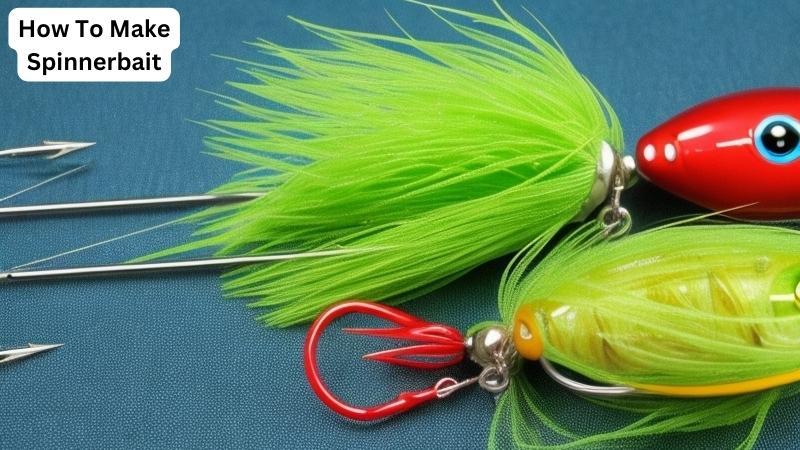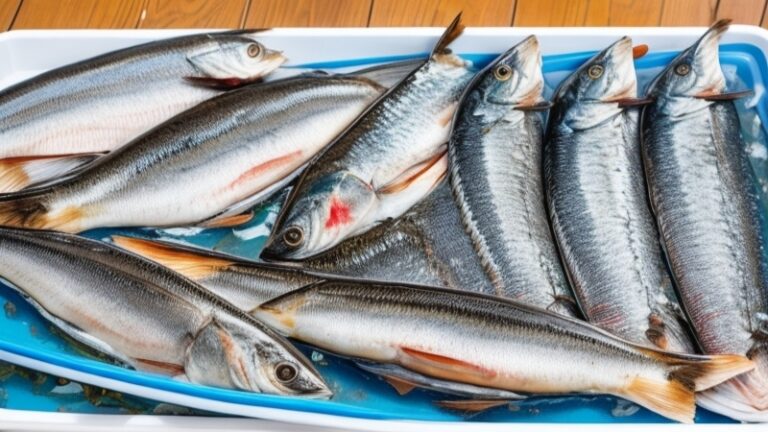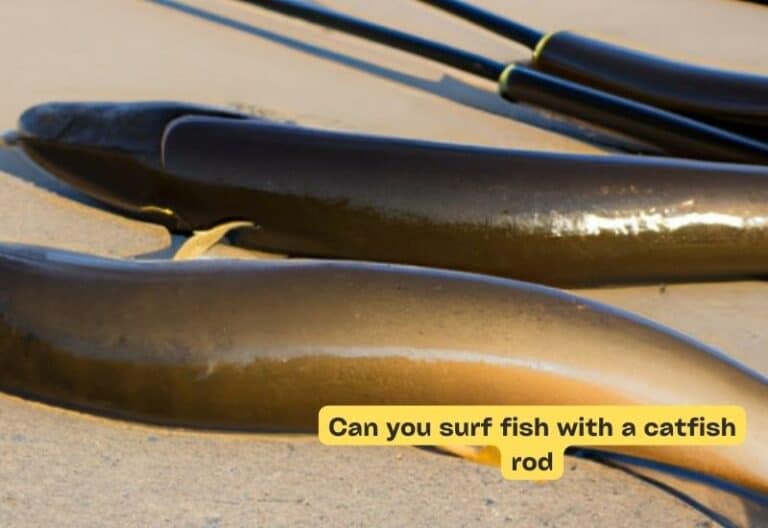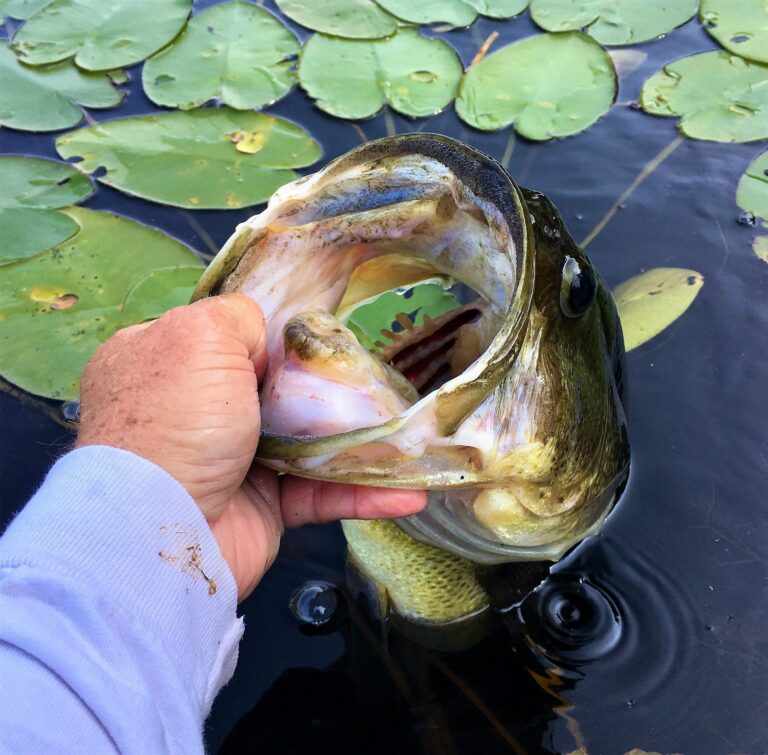How To Make Spinnerbait
Today we discuss How To Make Spinnerbait. The art of making spinnerbaits is not only a great way to save money, but it also allows you to unleash your creativity. By making your own spinnerbait, you have full control over the design, colors, and materials used. You can experiment with different blade styles, sizes, and colors, creating a lure that perfectly suits your fishing style and target species. Plus, there’s something immensely satisfying about catching fish on a bait you crafted with your own hands.
Before we begin, let’s talk about what a spinnerbait is. A spinner bait is a versatile fishing lure that consists of a wire frame, one or more spinning blades, a skirt, and a hook. The spinning blades create vibrations and flashes in the water, mimicking the movement of a prey fish and attracting predatory fish. Spinnerbaits are highly effective for catching a variety of freshwater species, including bass, pike, musky, and walleye. So, get ready to dive into the world of lure-making and create your own spinnerbait that will rival the store-bought ones! Let’s get started!
Features:
- Creating Your Own Spinnerbait: A Step-by-Step Guide
- Step 1: Gather the necessary materials such as a spinner, hooks, a swivel, and beads.
- Step 2: Assemble the spinnerbait by attaching the hook to the spinner using pliers.
- Step 3: Add beads to create vibration and attract fish.
- Step 4: Attach a swivel to prevent line twist.
- Step 5: Test your spinnerbait in the water and make any necessary adjustments.
How to Make Spinnerbait: A Beginner’s Guide
Spinnerbaits are versatile fishing lures that can attract a wide variety of fish species. Whether you’re an experienced angler looking to customize your gear or a beginner looking to try your hand at lure-making, learning how to make spinner bait can be a rewarding and cost-effective endeavor. In this article, we will walk you through the process of making your own spinnerbait, from choosing the right materials to assembling and customizing the lure to suit your fishing needs.
1. Gathering the Materials:
To make your own spinnerbait, you will need a few essential materials. Start by acquiring a wire shaft, spinner blades, ball bearing swivels, beads, a spinnerbait skirt, and a hook. These materials can be found at fishing supply stores or online. It’s important to choose high-quality components that are durable and suitable for the fish species you intend to target. Consider the size and weight of the components, as well as the color and design options available.
Once you have all the necessary materials, you can proceed to assemble your spinner bait. Cut the wire shaft to your desired length using wire cutters. Thread a ball bearing swivel onto the shaft, followed by a metal bead. Slide the spinner blade onto the shaft, ensuring that it spins freely. Add another metal bead before attaching the spinnerbait skirt. Finally, attach the hook at the bottom of the wire shaft using a split ring or wire twisting technique. Your basic spinnerbait is now ready, but you can further customize it to enhance its effectiveness in the water.
1.1 Choosing the Right Spinner Blades
The spinner blade plays a crucial role in attracting fish to your lure. There are various types of spinner blades available, each with its own unique design and functionality. Willow blades are long and narrow, providing a fast and tight spinning action. Colorado blades are more rounded and generate more vibration and thump in the water. Indiana blades are intermediate in shape, offering a combination of flash and vibration. Experiment with different blade styles to see what works best for your target fish species and fishing conditions.
2. Customizing Your Spinnerbait:
Customizing your spinner bait can make it more appealing to fish and increase your chances of a successful catch. One popular customization option is adding a trailer hook. This is an extra hook attached to the main hook using a short length of wire. It provides an additional point of contact for striking fish. Additionally, you can add soft plastic trailers, such as grubs or worms, to the hook to mimic natural bait and entice fish.
Another way to customize your spinnerbait is by experimenting with different skirt colors. Fish may be more attracted to certain colors depending on the conditions and the fish’s feeding patterns. Consider using bright colors in murky water or during low-light conditions, while natural or more subdued colors may be effective in clear water or when fish are more selective.
2.1 Adding Attractants
To make your spinnerbait even more enticing, you can apply attractants or scents to the lure. There are several options available, ranging from natural scents derived from baitfish to artificial scents specifically designed to attract fish. Apply a small amount of attractant to the spinner bait skirt or the trailer to create a scent trail that can help draw fish in and entice them to strike.
3. Fishing Techniques and Tips
When using a spinner bait, it’s important to employ proper fishing techniques to maximize your chances of a successful catch. Cast your spinnerbait near structures such as weeds, fallen trees, or rocky areas where fish are likely to hide and ambush their prey. Retrieve your spinner bait at a steady pace, allowing the blades to spin and create underwater vibrations that attract fish. Vary your retrieval speed and experiment with pauses or sudden jerks to mimic the movement of injured prey and trigger a strike.
It’s also crucial to pay attention to the conditions and adjust your approach accordingly. The depth at which you fish, the type of retrieve you use, and the colors and sizes of your spinnerbait may need to be adjusted depending on factors such as water clarity, temperature, and the behavior of the fish.
3.1 Safety Considerations
While fishing with spinnerbaits can be an enjoyable experience, it’s important to prioritize safety. Always wear appropriate protective gear, such as a life jacket if fishing from a boat or wading in deep water. It’s also important to be aware of your surroundings and follow local fishing regulations and guidelines.
Choosing the Right Materials for Your Spinnerbait:
When it comes to making your own spinnerbait, selecting the right materials is crucial for ensuring the lure’s effectiveness and durability. Here are some key considerations when choosing the materials for your spinnerbait:
1. Wire Shaft:
The wire shaft is the backbone of your spinnerbait, providing strength and flexibility. It’s important to choose a high-quality wire shaft that can withstand the pressure and strain of fishing. Stainless steel or titanium wire shafts are popular options due to their strength and corrosion resistance. Consider the thickness and flexibility of the wire shaft based on your target fish species and fishing conditions.
2. Spinner Blades:
Spinner blades come in various shapes, sizes, and colors, each offering a unique vibration and flash in the water. The choice of spinner blades depends on the fish species you’re targeting and the fishing conditions. Experiment with different blade styles to determine which ones work best for your needs. Ensure that the spinner blades are made from durable materials to withstand the rigors of fishing.
3. Ball Bearing Swivels:
Ball-bearing swivels are crucial components that allow the spinner blade to spin freely and prevent line twists. Look for high-quality ball-bearing swivels that are smooth and durable. Opt for swivels with a higher ball bearing count for enhanced performance and longevity.
4. Beads:
Beads are often used as spacers between the components of a spinnerbait. They add visual appeal and can create additional noise and vibration in the water. Choose beads made from materials like plastic, glass, or metal. Consider using beads in contrasting colors to attract fish.
Tips for Successful Spinnerbait Fishing:
To further improve your chances of success when fishing with spinnerbaits, here are some additional tips:
1. Match the Hatch:
Observe the natural prey in the water and choose spinnerbait colors and sizes that closely resemble them. Fish are more likely to be attracted to something that resembles their natural food source.
2. Adjust Your Retrieve:
Experiment with different retrieval speeds, pauses, and jerks to simulate the movement of injured baitfish. This erratic action can trigger a strike from predatory fish.
3. Fish Different Depths:
Vary the depth at which you fish by adjusting the weight of your spinnerbait or using different retrieval techniques. This allows you to target fish at different water levels and increases your chances of encountering active fish.
4. Pay Attention to Water Temperature:
Fish are sensitive to water temperature, and their feeding patterns can change accordingly. Adjust your fishing techniques and lure presentations based on the prevailing water temperature to increase your chances of success.
In summary, making your own spinner bait can be a rewarding and cost-effective way to enhance your fishing experience. By selecting the right materials, customizing your lure, and using effective fishing techniques, you can increase your chances of landing a prized catch. Remember to prioritize safety and respect fishing regulations to ensure a responsible and enjoyable fishing experience. So, grab your gear and get ready to catch some fish with your homemade spinnerbaits!
Key Takeaways: How to Make Spinnerbait
- Spinnerbaits are effective lures for catching fish.
- To make a spinnerbait, you will need a spinnerbait head, wire, skirt, and blades.
- Attach the skirt to the spinnerbait head and add blades to the wire arms.
- Experiment with different blade styles and colors to attract fish.
- Retrieve your spinnerbait with a steady, rhythmic motion to entice strikes.

Faqs for How To Make Spinnerbait:
Answer:
To make a spinnerbait, you will need a few key materials. These include a wire frame, spinnerbait blades, a hook, split rings, a swivel, plastic beads, and some tools such as pliers and wire cutters. The wireframe will serve as the base for your spinnerbait, and the blades, hook, and components will be attached to it.
Make sure to choose quality materials that are durable and corrosion-resistant. This will ensure your spinnerbait withstands the test of time and performs well in the water. You can find these materials at fishing supply stores or online retailers that specialize in fishing gear.
Answer:
Assembling a spinnerbait may seem daunting at first, but with some practice, it becomes a straightforward process. Start by attaching the hook to the wire frame using split rings. Next, slide a plastic bead onto the wire frame, followed by a spinnerbait blade. Repeat this process with as many blades as you desire.
After adding the blades, slide on another plastic bead to secure them in place. Attach a swivel to the other end of the wire frame using a split ring. Finally, use pliers to create a secure connection between the wireframe and the swivel. Your spinnerbait is now ready to be used!
Answer:
Spinnerbaits come in various blade types, and each has its own unique action and appeal to fish. The most popular blade types for spinnerbaits include Colorado blades, Willow blades, and Indiana blades. Colorado blades are known for their slow and steady rotation, making them ideal for attracting fish in low visibility or murky water.
Willow blades, on the other hand, have a narrow profile and provide a fast, flashy spin. They are excellent for clear water and imitating fast baitfish movements. Indiana blades fall in between Colorado and Willow blades when it comes to both speed and vibration. Experimenting with different blade types can help you determine which works best for the conditions you’ll be fishing in.
Customizing your spinnerbaits can add a personal touch and increase their effectiveness. One popular technique is adding a trailer hook to your spinner bait. This additional hook can increase hooking chances, especially when fish are striking short.
You can also experiment with different colors and sizes of spinner bait blades to match the baitfish or attract the attention of fish in the area.
Answer:
When fishing with spinnerbaits, it’s important to vary your retrieval speed and depth to entice fish. You can retrieve the spinnerbait at a steady pace or experiment with pauses and jerks to imitate injured baitfish. Casting near cover, such as weeds or submerged structures, can also lure fish by mimicking prey hiding spots.
Another effective technique is “slow-rolling” your spinnerbait, where you retrieve it just above the bottom at a slow speed. This can be particularly effective in triggering strikes from bottom-dwelling fish. Remember to keep an eye on your line for any sudden movements or twitches, as this could indicate a fish has taken interest in your spinnerbait.
Make your own Spinner bait ( from scratch )
Summary:
Making your own spinner bait can be a fun and rewarding project for young anglers. By following a few simple steps, you can create a fishing lure that is both effective and personalized to your preferences. Start by gathering the necessary materials, such as wire, beads, and hooks. Then, assemble the spinnerbait by bending the wire into a desired shape and adding the components. Finally, test your creation in the water and make any adjustments as needed. With practice, you’ll be catching fish on your homemade spinnerbait in no time!





